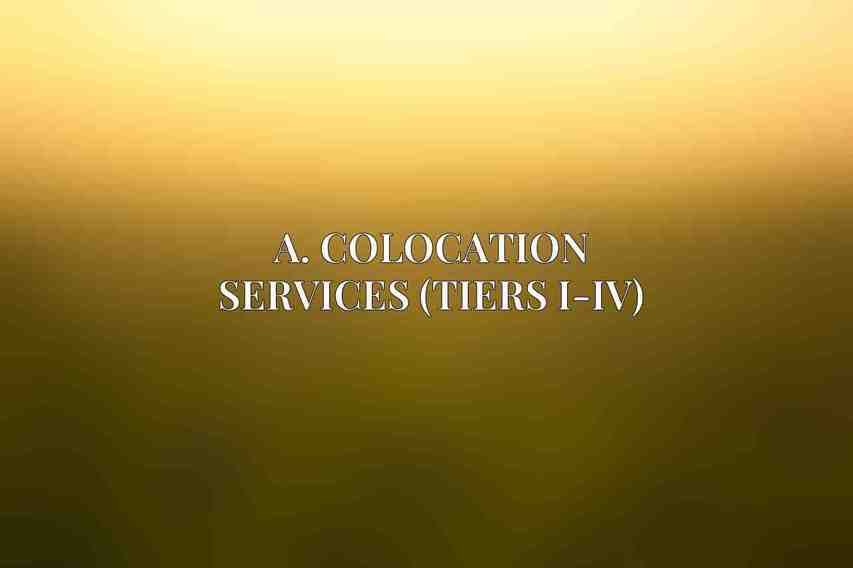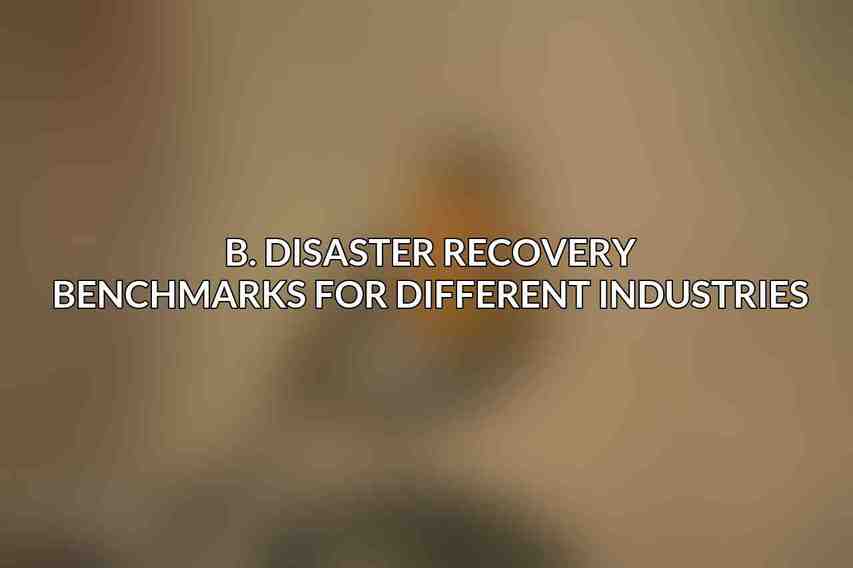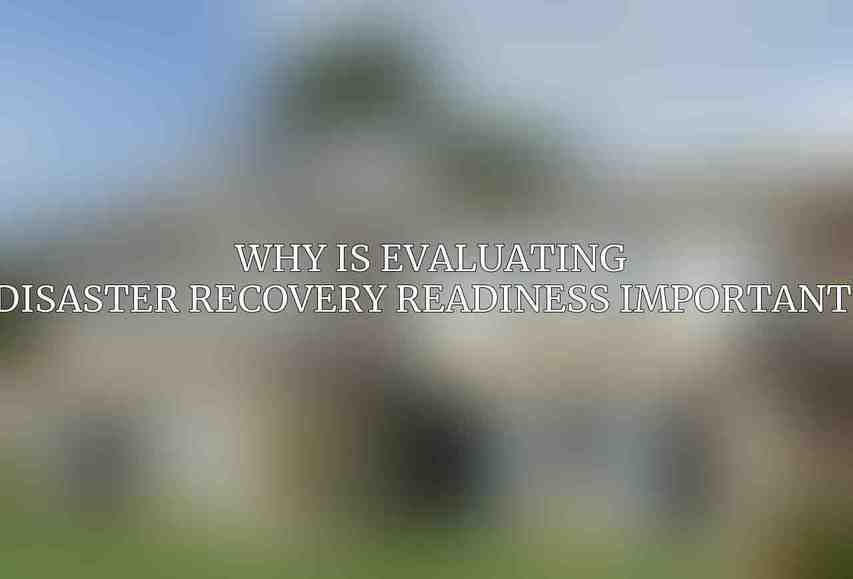Disaster recovery readiness is a critical component of any business continuity plan. It refers to the preparedness and ability of an organization to recover and resume its operations after a disruptive event. This evaluation ensures that businesses can mitigate the impact of disasters, minimize downtime, and protect their data and systems. Today, where data is a valuable asset, the importance of disaster recovery readiness cannot be overstated.
The costs and consequences of inadequate disaster recovery preparation can be severe. In the event of a disaster, whether natural or man-made, organizations may face financial losses, damage to their reputation, legal implications, and operational disruptions that could potentially lead to business closure. Therefore, investing in robust disaster recovery solutions is essential to safeguard the continuity of operations and protect the interests of stakeholders.
| Feature | Description | ||||||||||||||||||||||||||||||||||||||||||||||||||||||||||||||||||||||||||||||||||||||||||||||||||
|---|---|---|---|---|---|---|---|---|---|---|---|---|---|---|---|---|---|---|---|---|---|---|---|---|---|---|---|---|---|---|---|---|---|---|---|---|---|---|---|---|---|---|---|---|---|---|---|---|---|---|---|---|---|---|---|---|---|---|---|---|---|---|---|---|---|---|---|---|---|---|---|---|---|---|---|---|---|---|---|---|---|---|---|---|---|---|---|---|---|---|---|---|---|---|---|---|---|---|---|
| Data center locations | 20+ locations in the US, Europe, and Asia | ||||||||||||||||||||||||||||||||||||||||||||||||||||||||||||||||||||||||||||||||||||||||||||||||||
| Tier levels | Tier III and Tier IV | ||||||||||||||||||||||||||||||||||||||||||||||||||||||||||||||||||||||||||||||||||||||||||||||||||
| Security | 24/7 security, biometric access control, and video surveillance | ||||||||||||||||||||||||||||||||||||||||||||||||||||||||||||||||||||||||||||||||||||||||||||||||||
| Compliance | SOC 2, HIPAA, PCI DSS, and ISO 27001 | ||||||||||||||||||||||||||||||||||||||||||||||||||||||||||||||||||||||||||||||||||||||||||||||||||
| Network | Redundant network infrastructure with multiple carriers | ||||||||||||||||||||||||||||||||||||||||||||||||||||||||||||||||||||||||||||||||||||||||||||||||||
| Power | Redundant power systems with UPS and generators | ||||||||||||||||||||||||||||||||||||||||||||||||||||||||||||||||||||||||||||||||||||||||||||||||||
| Cooling | Redundant cooling systems with chillers and CRAC units | ||||||||||||||||||||||||||||||||||||||||||||||||||||||||||||||||||||||||||||||||||||||||||||||||||
| Support | 24/7 technical support | ||||||||||||||||||||||||||||||||||||||||||||||||||||||||||||||||||||||||||||||||||||||||||||||||||
| Pricing | Contact Colohouse for pricing | ||||||||||||||||||||||||||||||||||||||||||||||||||||||||||||||||||||||||||||||||||||||||||||||||||
| Visit Colohouse | |||||||||||||||||||||||||||||||||||||||||||||||||||||||||||||||||||||||||||||||||||||||||||||||||||
Colohouse Disaster Recovery Solutions
Colohouse offers a range of disaster recovery solutions designed to meet the diverse needs of businesses across various industries.
A. Colocation Services (Tiers I-IV)

When considering Colohouse for colocation services, customers benefit from a variety of facility features that ensure the security, power availability, efficient cooling systems, and reliable high-bandwidth connectivity. With data centers located in the US, UK, Canada, and Netherlands, Colohouse provides a global reach for businesses seeking secure and resilient colocation solutions.
B. Cloud Services
Colohouse’s cloud services include Infrastructure-as-a-Service (IaaS) for scalable computing resources and Disaster Recovery-as-a-Service (DRaaS) for seamless data protection and recovery solutions.
C. Managed Services
For businesses looking for expert support in network management, backup and recovery, and security monitoring, Colohouse offers managed services to offload the day-to-day IT management tasks and ensure operational efficiency.
Evaluation Framework for Disaster Recovery Readiness
A. Key Metrics for Assessing Readiness
- Recovery Point Objective (RPO): The maximum acceptable data loss in case of a disaster.
- Recovery Time Objective (RTO): The target time for restoring operations after a disaster.
- Data Loss Tolerance (DLT): The level of data loss that the organization can withstand.
- Downtime Threshold: The maximum tolerable period of system unavailability.
B. Disaster Recovery Benchmarks for Different Industries

Different industries have unique requirements when it comes to disaster recovery readiness. Colohouse provides tailored solutions to meet the specific needs of industries such as healthcare, finance, manufacturing, and retail.
C. Disaster Recovery Readiness Checklist
- Business Impact Analysis
- Disaster Recovery Plan
- Data Backup and Replication Strategy
- Communication and Coordination Protocols
- Employee Training and Awareness
Stay tuned! More in Part 2.
Frequently Asked Questions
What is disaster recovery readiness?
Disaster recovery readiness refers to the preparedness of an organization to respond to and recover from potential disasters or disruptions, such as natural catastrophes, cyber attacks, or system failures.
Why is evaluating disaster recovery readiness important?

Evaluating disaster recovery readiness is crucial for organizations to ensure they have the necessary plans, resources, and strategies in place to minimize downtime and maintain business continuity in the event of a disaster.
What are some key factors to consider when evaluating disaster recovery readiness?
Some key factors to consider when evaluating disaster recovery readiness include assessing the robustness of backup and recovery systems, testing disaster recovery plans regularly, ensuring data security, and training staff on proper disaster response protocols.
How can organizations improve their disaster recovery readiness?
Organizations can improve their disaster recovery readiness by conducting regular assessments and audits of their disaster recovery plans, investing in reliable backup and recovery solutions, implementing strong cybersecurity measures, and providing ongoing training for employees.
What resources are available to help organizations evaluate their disaster recovery readiness?
There are various resources available to help organizations evaluate their disaster recovery readiness, including risk assessment tools, disaster recovery planning templates, and consulting services from disaster recovery experts.

